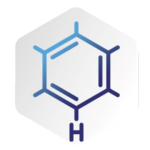Chromatography is a physical method used to separate complex mixtures. (A mixture of different components that is washed through the system at different speed).
Chromatography can be used for the purification of volatile substances if suitable carrier fluid, operating conditions and adsorbent materials are applied.
Gas chromatography can only be fulfilled in column form (this can be solid gas chromatography or gas liquid chromatography)
In chromatography, the mobile phase can consists of gas or liquid.
Magnesium oxide, silica gel, activated alumina and all of them are examples of adsorbents in column absorption except potassium permanganate. Some other adsorbents are included starch and silica soil purified by chromatography.
In column chromatography, the stationary phase is made of solid and the mobile phase is made of liquid. This is done in a tall glass column.
Solid-gas chromatography is based on the adsorption of gaseous substances on a solid surface (It is useful for the separation of rare gases).
Its disadvantages are the density retention of polar solutes, the occurrence of catalytic changes, and the fact that it cannot be used for a very wide range of components. But the lifetime of solid gas chromatography is long and can be used for geometrical isomers.
Ability to recognize materials based on their size. Molecular sieves have the power to distinguish substances based on their size. This feature can be used to separate linear structure molecules from bulk molecules.
In the tungsten halogen lamp, iodine is added to the ordinary backfill glass, and in the tungsten incandescent lamp, the tungsten filament is enclosed in a glass bubble filled with an inert gas or vacuum.
Mass spectrometers are used to determine the relative mass of atoms and molecules.
Because they are spoiled due to the absorption of heat, which leads to the change of gelatin and by absorbing heat, and they are damaged in the aftermath of change of gelatin (the color turns white).
In the mass spectrometer, the sample to be analyzed is bombarded by electrons, as a result, ions are produced.
A mass spectrometer separates ions based on the mass-to-charge ratio, so the mass-to-charge ratio is equal to the mass.
In a mass spectrometer, ions are categorized by accelerating them through electrical and magnetic fields (the record of the number of different types of ions is called a mass spectrum).
No two molecules fragment and ionize in exactly the same way, thus different molecules are identified in a complex mixture.
The mass spectrometry method begins with converting the sample into a gaseous mode (This is done by chemical processes).
Positive ions with specific mass pass through the gap and reach the collector plate. These ions are measured
A combined column is used to separate argon and oxygen peaks. Oxygen is removed due to the catalytic reaction with hydrogen. Hydrogen is applied as the carrier gas, so only the argon peak is washed.
